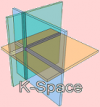March 2006 (36 months)
Multimedia Semantic Syndication for Enhanced News Services (MESH) will apply multimedia analysis and reasoning tools, network agents and content management techniques to extract, compare and combine meaning from multiple multimedia sources, and produce advanced personalized multimedia summaries, deeply linked among them and to the original sources to provide end users with an easy-to-use “multimedia mesh” concept, with enhanced navigation aids. A step further will empower users with the means to reuse available content by offering media enrichment and semantic mixing of both personal and network content, as well as automatic creation from semantic descriptions. Encompassing all the system, dynamic usage management will be included to facilitate agreement between content chain players (content providers, service providers and users). In a sentence, the project will create multimedia content brokers acting on behalf of users to acquire, process, create and present multimedia information personalized (to user) and adapted (to usage environment). These functions will be fully exhibited in the application area of news, by creation of a platform that will unify news organizations through the online retrieval, editing, authoring and publishing of news items.
Funded under: FP6-IST




